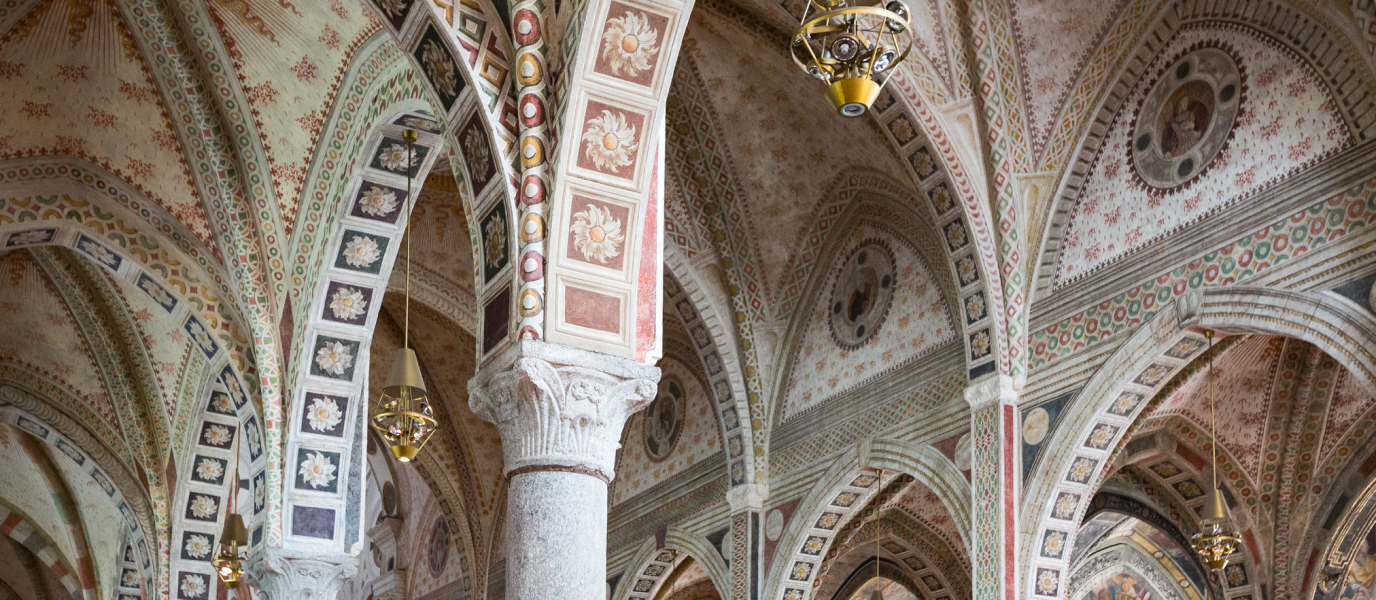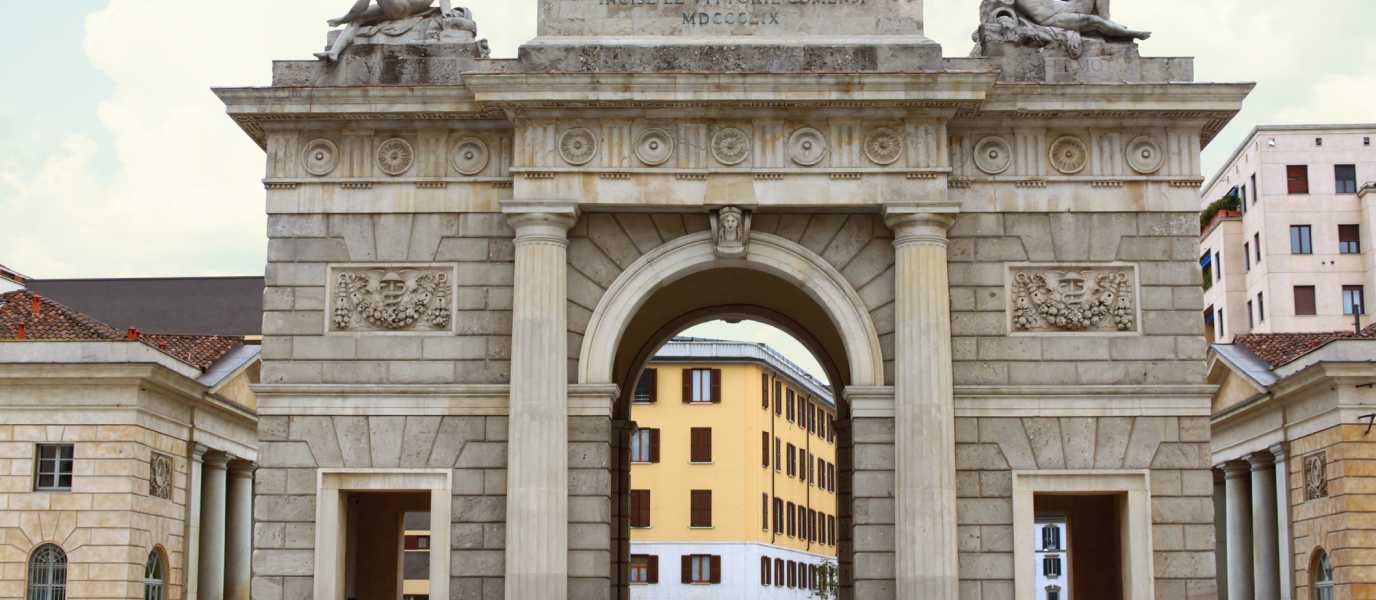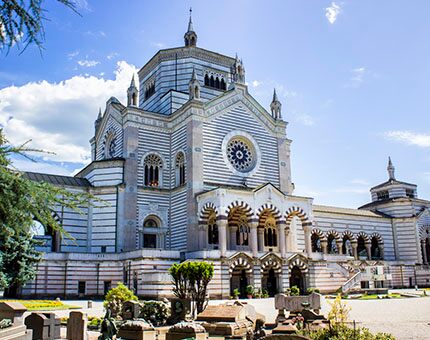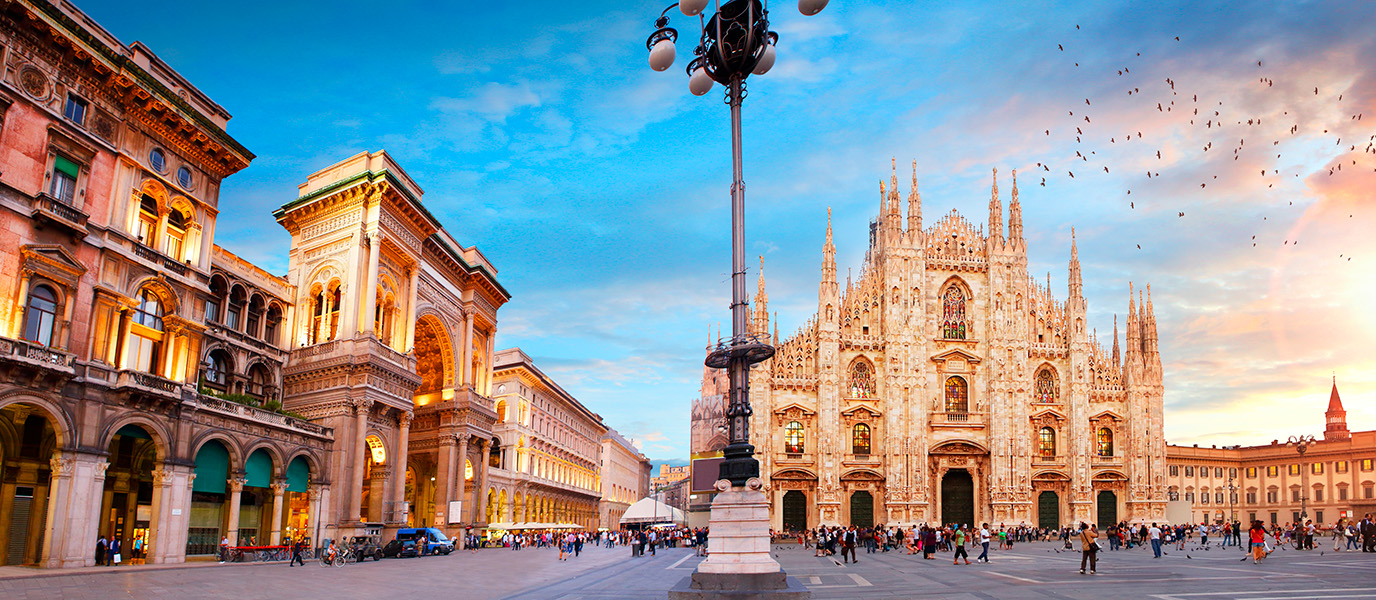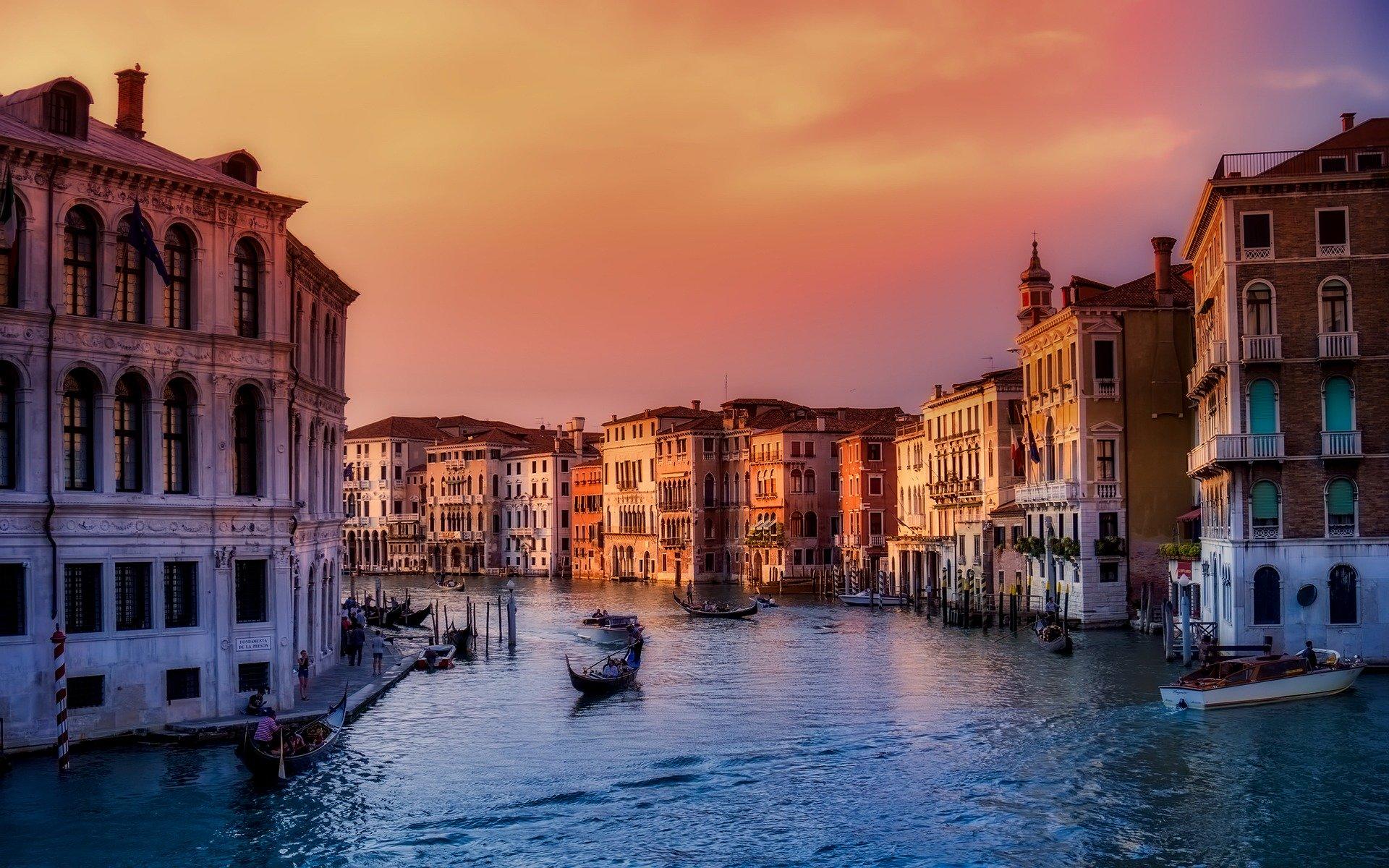The Basilica of Sant’Ambrogio’s long history has given it hugely varied architectural features and it’s one of the finest examples of the Lombard Romanesque. When visiting the basilica, before you enter this ancient Christian temple you’re initially met by a front atrium with a portico, giving you a few moments to reflect on the symmetry and beauty of its galleries and arches.
The basilica is exceptional for its two bell towers, which were built for a surprising reason: in 789 a monastery was established on the site and populated by monks who formed a community here. Until then, Sant’Ambrogio had been run by regular clerics who didn’t live at the church, but the unusual decision was made for the two groups to coexist in the same space and the basilica was divided into two. When the monks built a bell tower in the 9th century (the Tower of the Monks), they wouldn’t let the clerics use it to call people to mass. So, in the 12th century, the clerics built their own bell tower, leading to the remarkable profile the basilica has today.
However, the most dazzling features of the basilica are found in its interior, which is decorated in mosaics, precious stones, gold and silver. Every inch is home to details such as a funerary plaque, trompe l’oeil paintings that imitate mortuary statues, inscriptions in Latin and scenes from the life of Saint Ambrose. The remains of Christian martyrs and the body of Saint Ambrose are also on display. Together with the Duomo, Sant’Ambrogio is the most important church in Milan and one of Christianity’s most symbolic and exceptional basilicas.
The gold altar and other treasures at the Basilica of Sant’Ambrogio in Milan
The interior of Sant’Ambrogio is literally packed with precious objects, wonderful mosaics and luxurious chapels, and you can also see the remains of saints Ambrose, Gervase and Protase in the Chapel of the Saints. The body of Saint Ambrose is covered in fine fabrics and is one of the most impressive sights in the Chapel of the Saints. The basilica has many remarkable attractions; here are four of the most important:
- Ciborium and Gold Altar. This structure is supported by four marble columns topped by a dome and was used in ancient churches to house the altar. The Ciborium or Baldaquino of Milan is one of the most impressive pieces of gold work created during the Empire of Charlemagne. It shelters the famous altar of Saint Ambrose, which is covered with gold and precious stones.
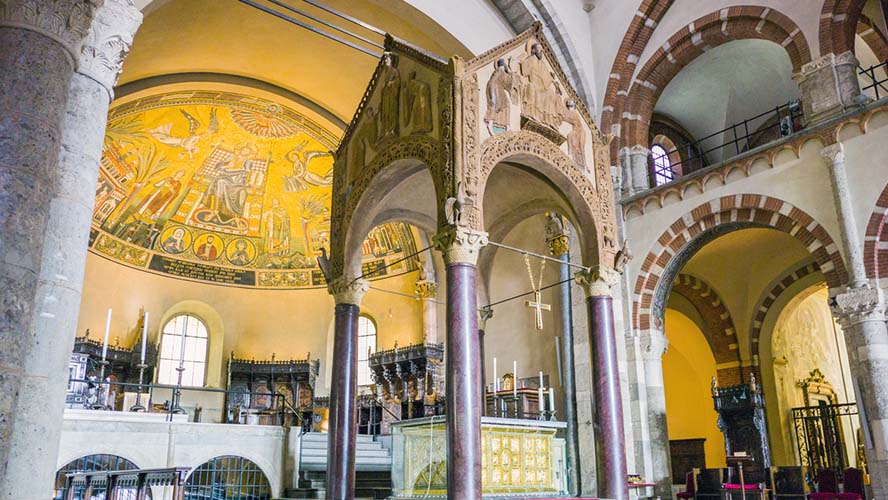
- Choir. The apse contains carved wooden seats used by the choir to sing psalms and liturgical songs. It’s crowned by a dome covered with 5th century mosaics in the Byzantine style that depict Christ Pantocrator and images from the life of Saint Ambrose.
- Museum. The museum contains highly valuable objects of great antiquity. One such example is the gold mostrance, a large and impressive gold vessel where the Eucharist wafers are stored.
You’ll also see the Piagnoni room here, home to tromp l’oeil painting that tricks viewers into thinking they can see two reclining figures, plus murals, sculptures and paintings from different schools. This room has a particularly unusual past: the Piagnoni were the followers of the famous heretic Savonarola.
During his fifty-year life, this controversial Dominican monk demanded church reforms; he rose to power in Florence where he burned citizens’ luxury possessions on the “bonfire of the vanities”, as well as several people accused of vanity. In the end he was excommunicated by Pope Alexander VI. Shortly after appearing before the pope, Savonarola was burned at the stake, and so his legend began.
- Chapel of San Vittore in Ciel d´Oro. The “Chapel of the Golden Heaven” is covered in golden mosaics and the first known portrait of Saint Ambrose can be seen at the top. It’s dedicated to the martyr Saint Victor, a Roman soldier who refused to celebrate the Empire’s pagan rites at the beginning of the 3rd century. The chapel pre-dates the basilica and when the church was built, the chapel was incorporated into the complex.
A thousand-year-old place of worship
The Basilica of Sant’Ambrogio is one of the most beautiful examples of the Lombard Romanesque and has parallels with Byzantine architecture. Oriental inspiration can also be seen in another city that belonged to the Byzantine Empire: Ravenna. It was originally a church on the outskirts of town that was used to honour the bodies of the martyrs; today, it’s in the heart of the city.
This ancient place of worship was founded in the 4th century on the orders of Saint Ambrose to house the remains of the first Christian martyrs, who were executed in the last centuries of the Roman Empire. After Saint Ambrose’s death, the basilica was given his name and underwent a series of repair works and later additions. Although parts that have been conserved from the 9th century are still visible, the Basilica of Sant’Ambrogio was given its definitive shape in around 1100 and this is the form that visitors can admire today.
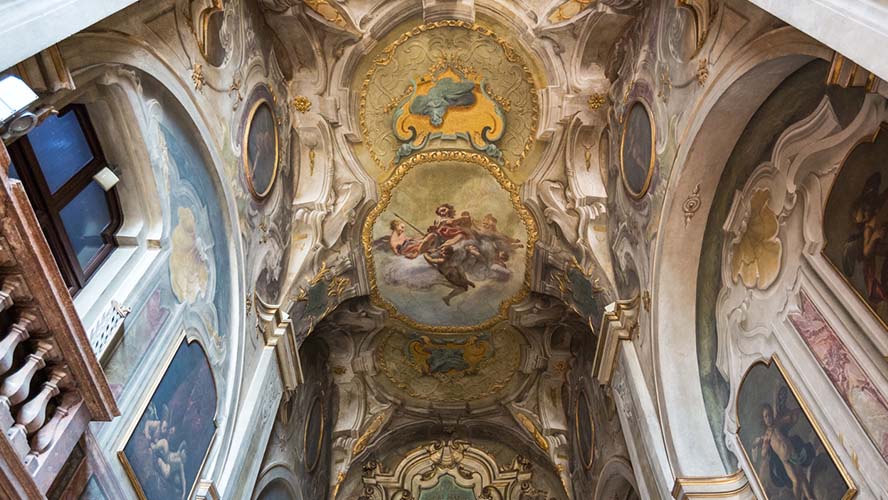
For almost 2,000 years, the church and later Basilica of Sant’Ambrogio reflected the changes and cultures that arose during such a lengthy period of time. Perhaps the most important of all the great artists and architects to leave their mark here was Donato Bramante, who began construction on the Basilica of St Peter’s. At Sant’Ambrogio, he was responsible for refurbishing the new refectory.
Saint Ambrose: patron saint of Milan and founding father of the Church
The story of the Basilica of Sant’Ambrogio began on the initiative of Saint Ambrose, an early proponent of the emerging Latin Church. Christianity was divided at this time and Saint Ambrose defended the ideas adopted by the Church of Rome during the Council of Nicaea in 325. It addressed crucial questions for the future Church, such as establishing that Jesus wasn’t a human being like normal people, he was the Son of God and therefore divine.
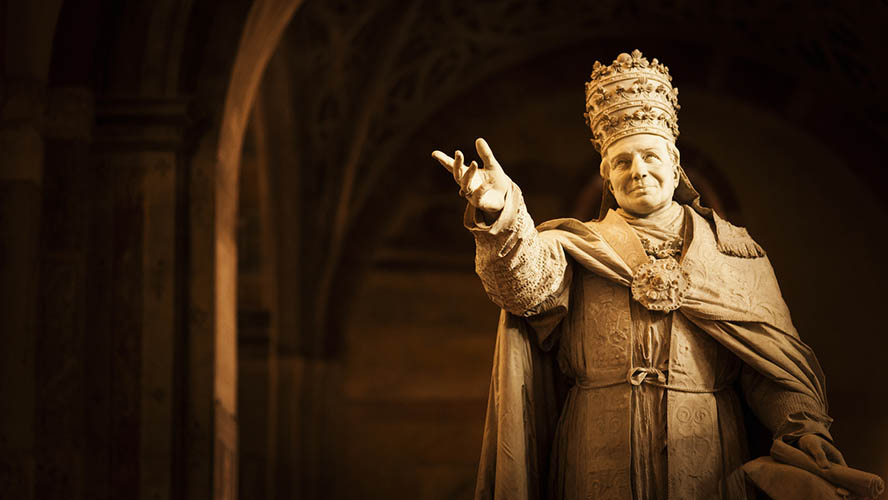
Today, Saint Ambrose is recognised as one of the four fathers of the Church; during the years when different interpretations of the message of Christ abounded, these four figures set the guidelines that should be followed. Since then, they have been much admired and studied; Saint Augustine has had the greatest success, fame and influence of the four. It was Saint Ambrose who convinced Saint Augustine to join the postulates of the Church, and he personally baptised Augustine, author of the widely read Confessions.
Useful information
- Entry: free
- Opening hours: From Monday to Saturday 10 a.m. to 12 p.m., and 2.30 p.m. to 6 p.m.
On Sundays it opens from 3 p.m. to 5 p.m.
How to get there:
- By bus: Routes 50, 58 and 94.
- By metro: S. Ambrogio stop, line M2.
Useful links:




































































